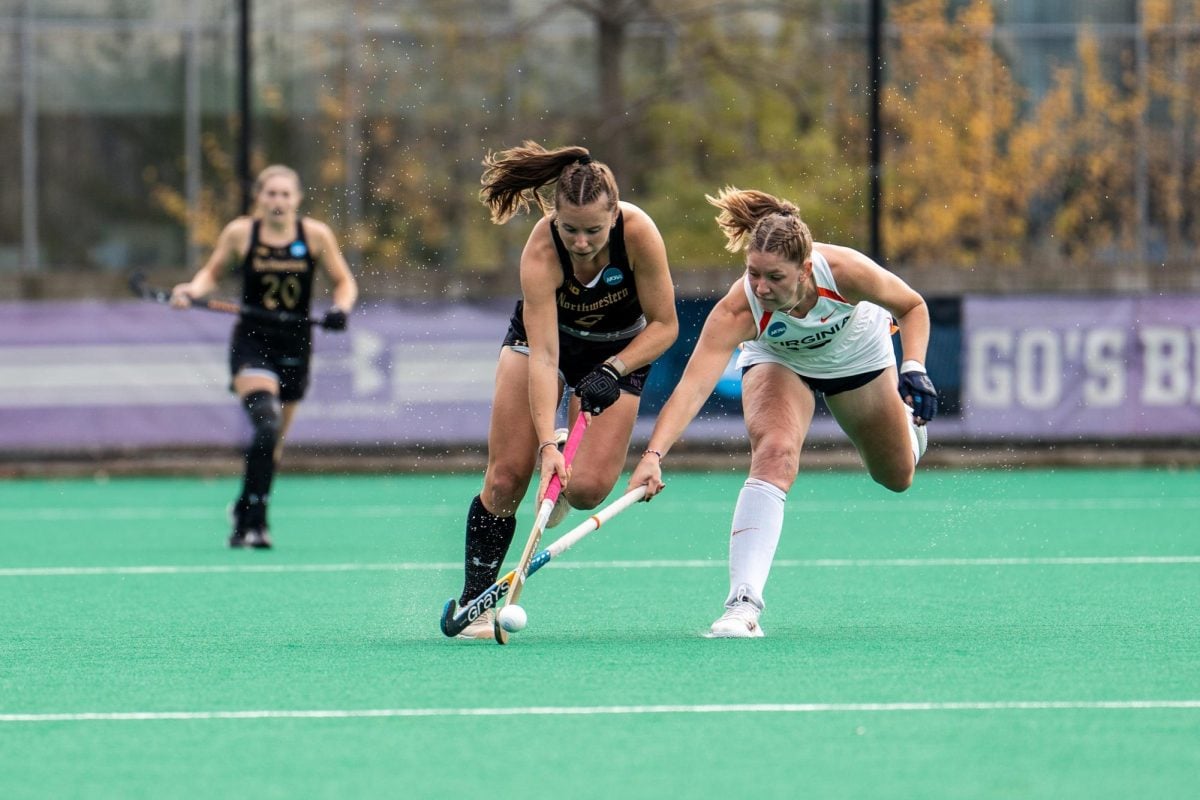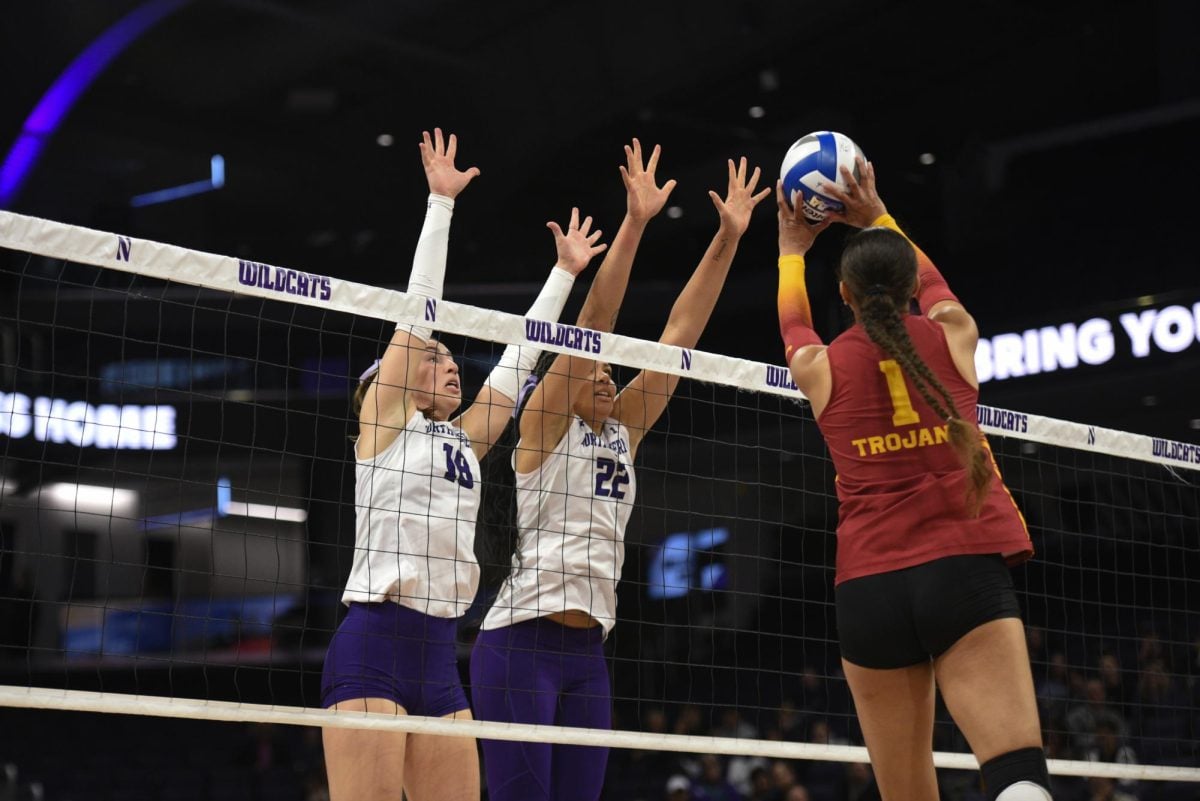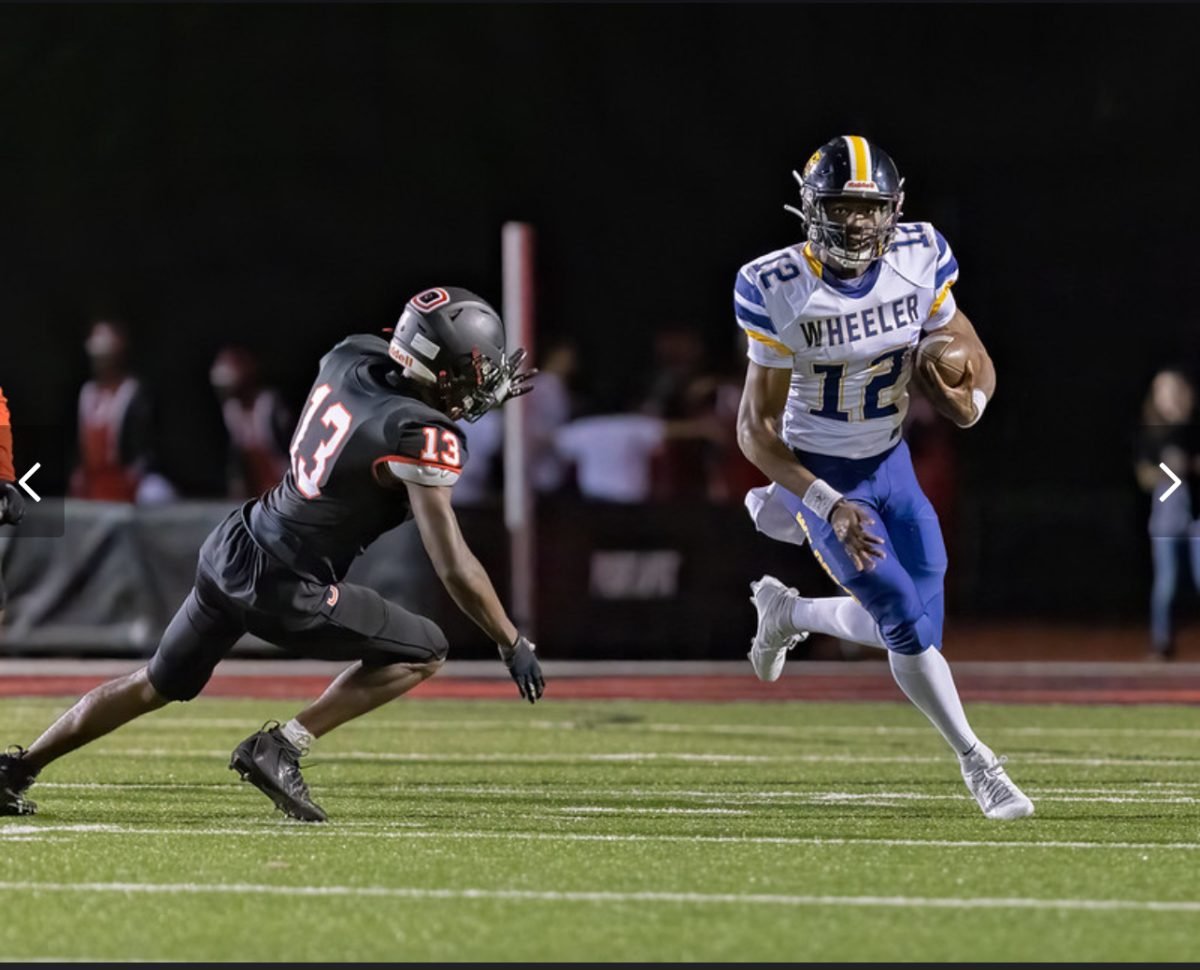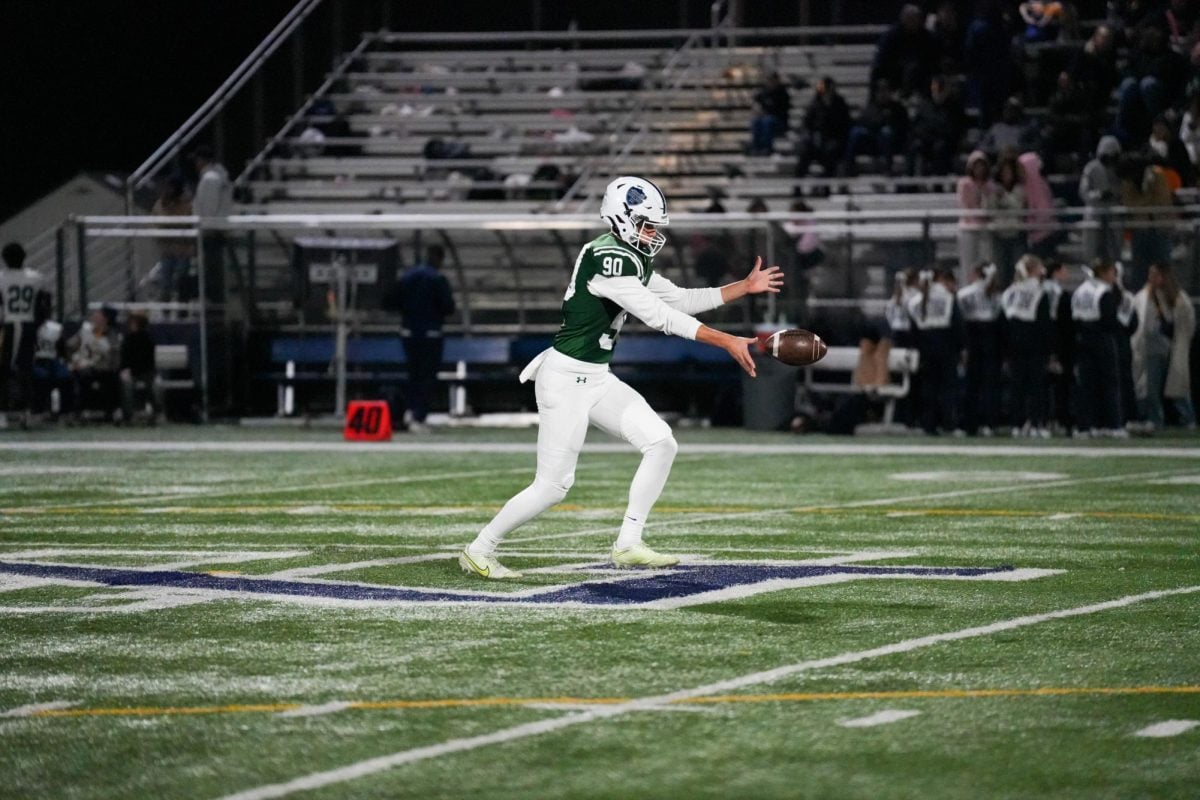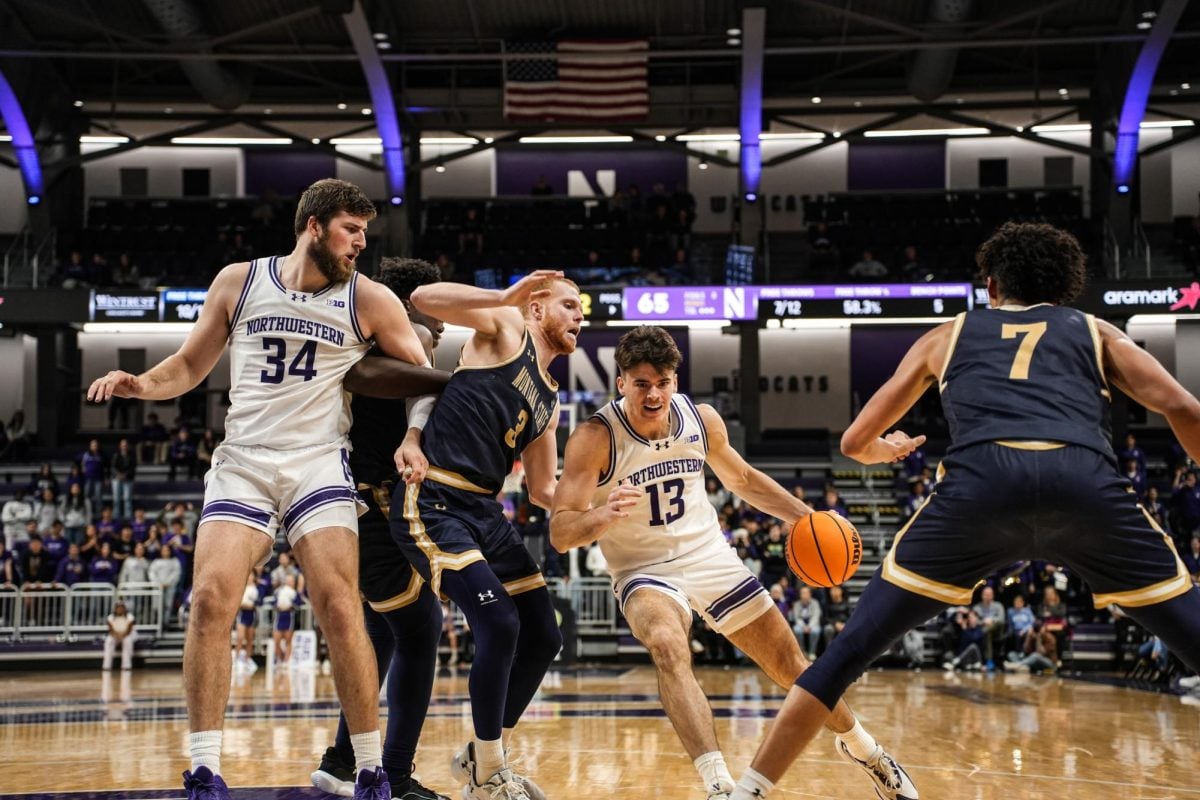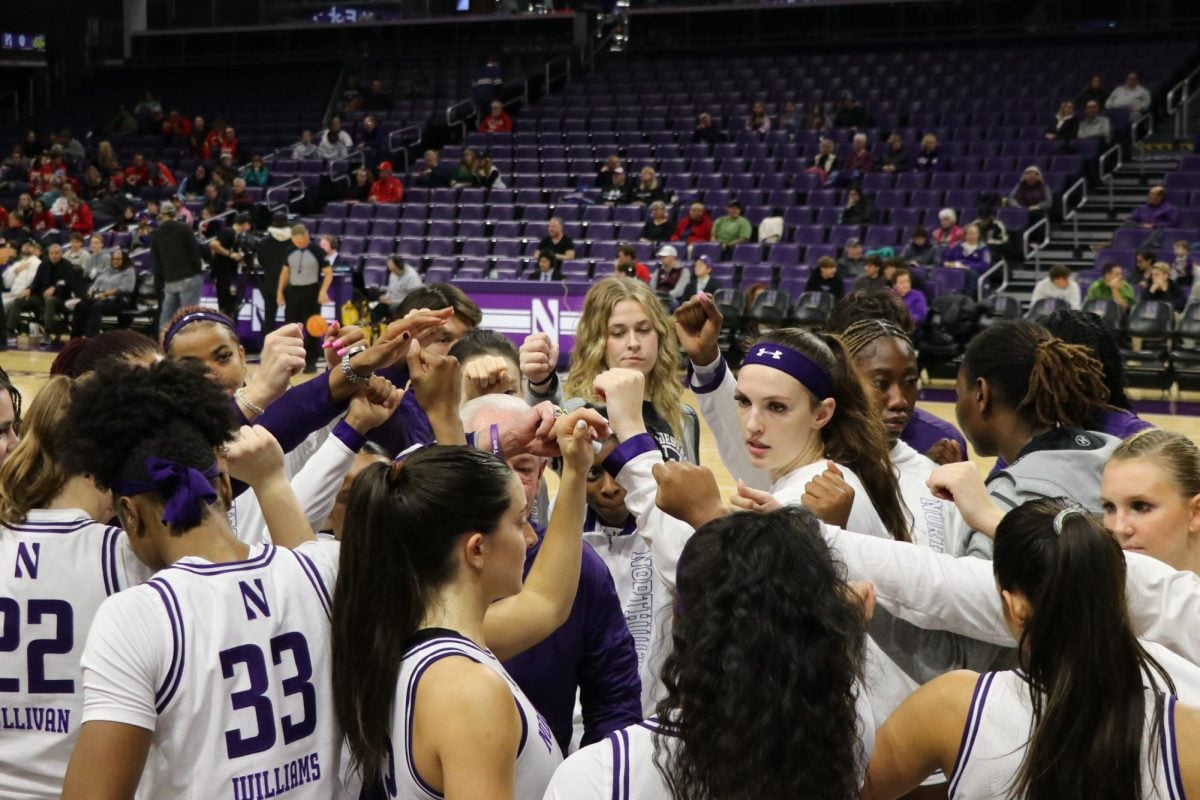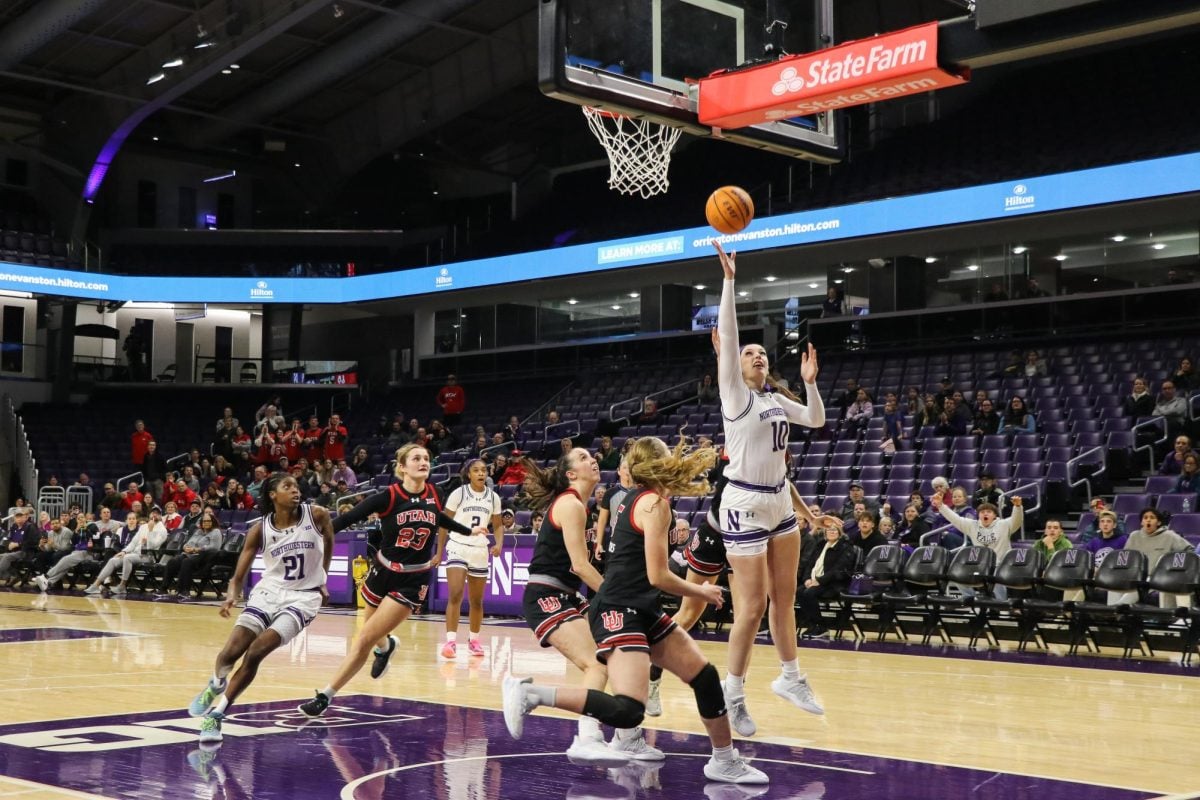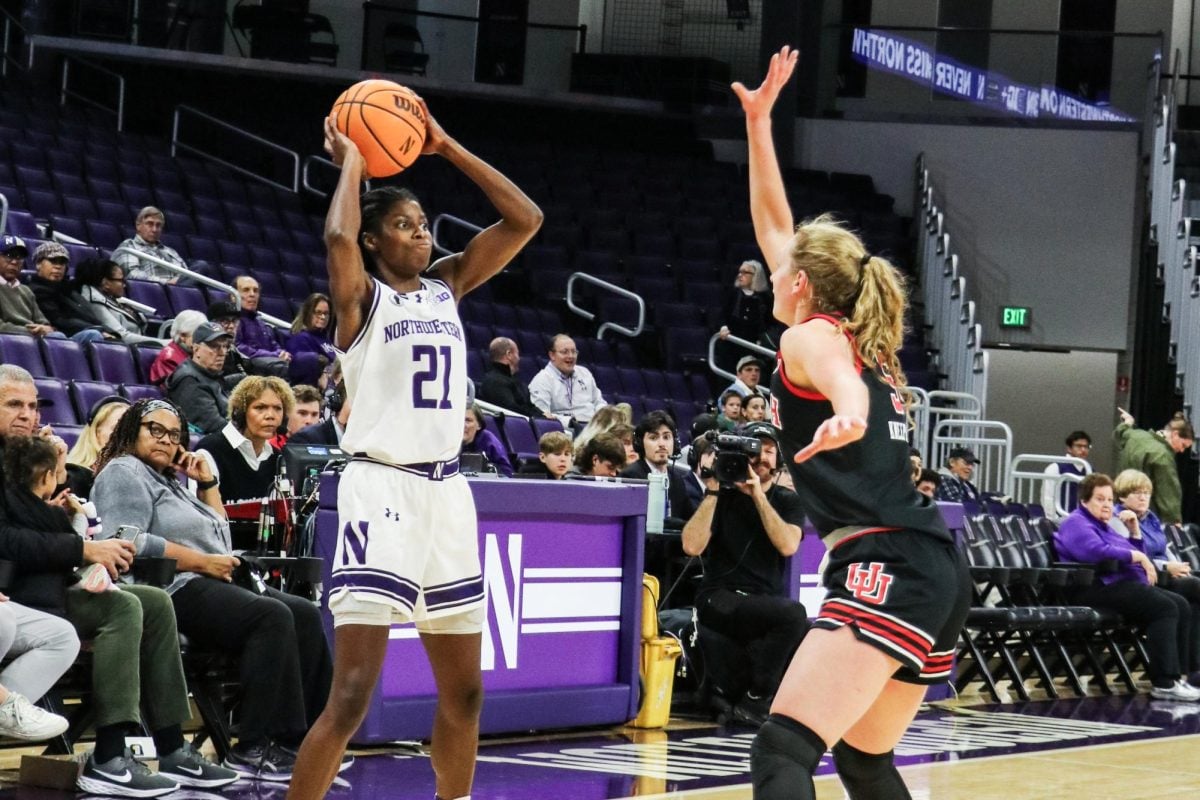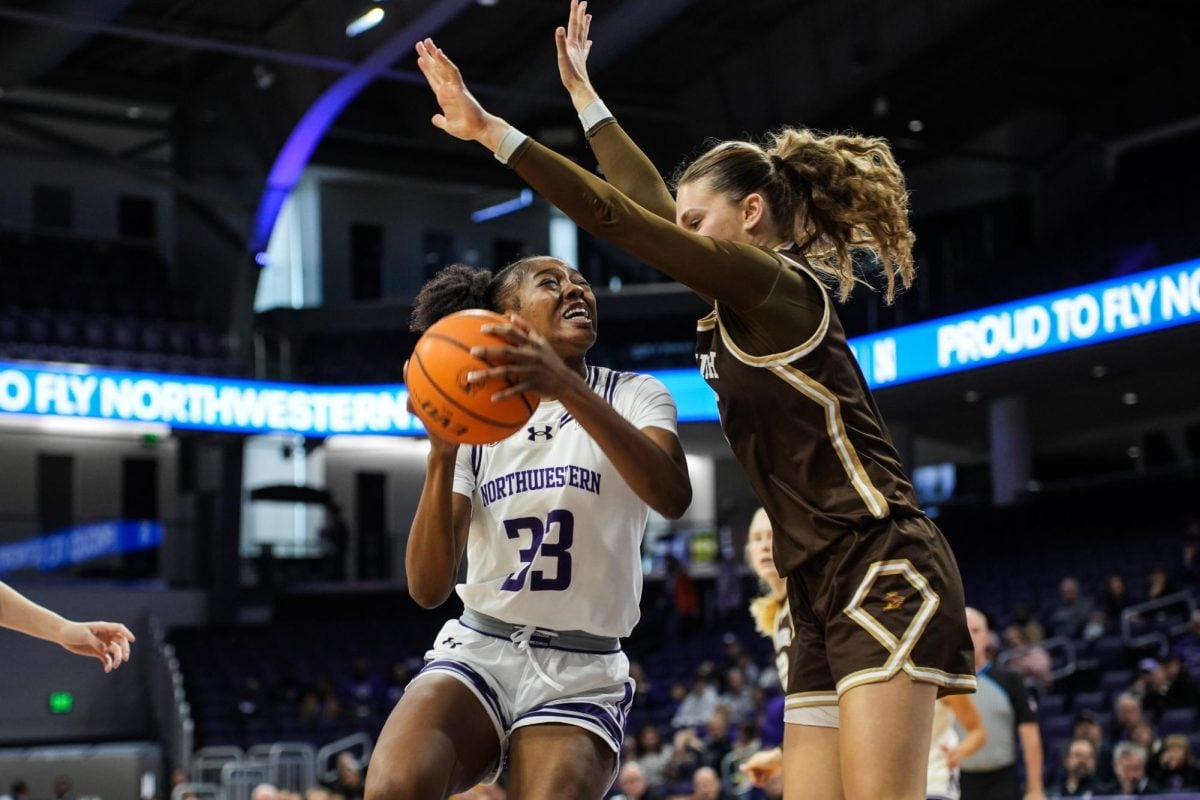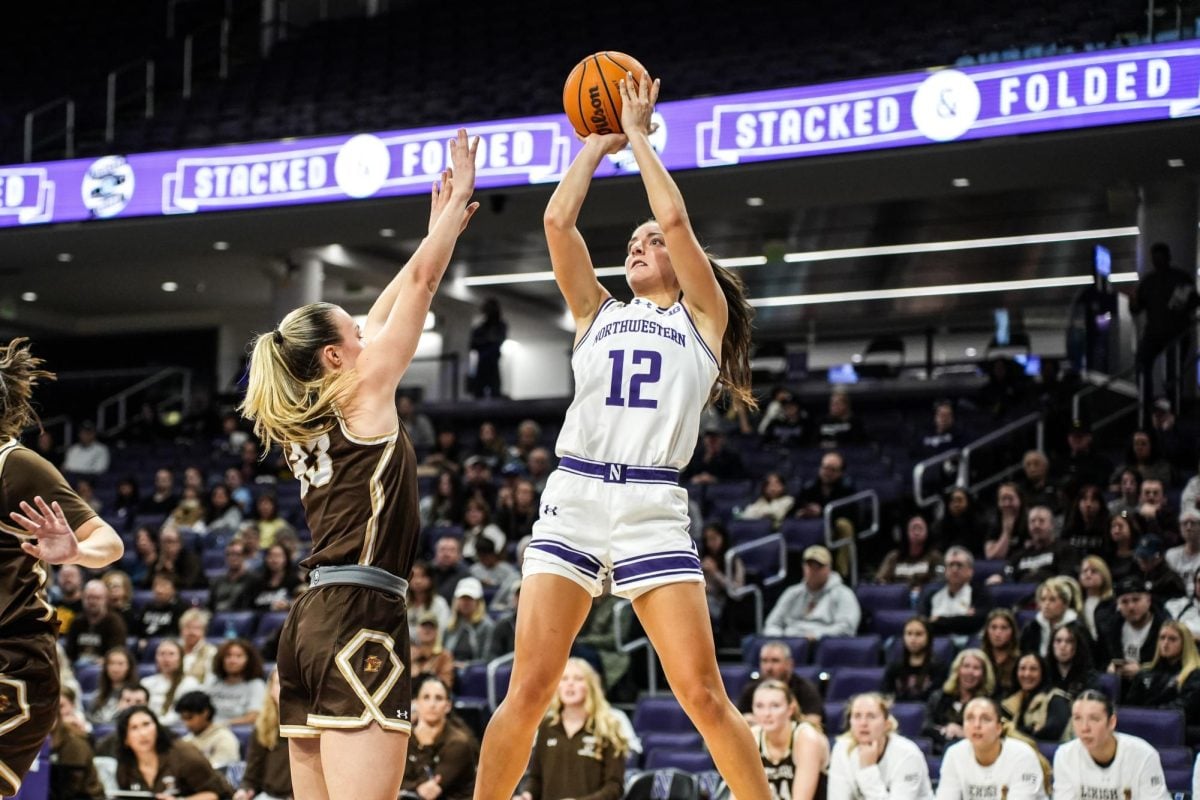As the Wildcats prepare to adjust to life without Amy Jaeschke, they are in step with a broader change that is sweeping the Big Ten.
With the graduation of dominant post players like Jaeschke, Iowa’s Kachine Alexander and Ohio State’s Jantel Lavender, the conference finds itself devoid in the paint. But in their place stand a talented crop of guards that will likely prove to be the stars of the 2011-2012 season.
When the Big Ten’s coaches submitted their two preseason players of the year, it was hardly a coincidence that both were guards: Ohio State’s Samantha Prahalis and Penn State’s Alex Bentley. Similarly, when the coaches named their preseason top five players, three were guards. The media’s selections went much the same way.
The one thing that might disrupt the Big Ten’s turn towards the perimeter game is the implementation of NCAA rules moving the three-point line back.
NU was heavily reliant on the three-pointer at times last season, finishing third in the conference with its 33.6 percentage from behind the arc. But now the Cats and all of their Big Ten colleagues will have to deal with rule changes that shifted the three-point line nine inches back to where the men’s line is located.
Michigan coach Kevin Borseth was among many players and coaches who stated that the rule change would have very little influence on the game.
“It’s kind of interesting if you watch the three-point line from all your videotapes,” Borseth said, “for the most part, all of us were shooting the ball from beyond that arc anyway.”
Michigan State coach Suzy Merchant agreed the rule change would have little effect, but acknowledged the likelihood that shooting percentages from behind the arc would plummet.
“Do I think field-goal percentages from behind the arc will go down?” Merchant said. “Yes, but they have anyway because kids play a lot of summer ball and they don’t spend as much time individually in the gym with repetition on getting their shots up.”
In another noteworthy change to the rule book, the NCAA instituted a restricted arc, in which defensive players are not permitted to take charges, similar to the system already being used in the men’s game. The institution will also be testing the 10-second rule, by which the offensive team has 10 seconds to advance the ball past midcourt.
Merchant indicated strong opposition to such a change at Big Ten Media Day.
“I’m against the 10-second rule in the backcourt for women,” Merchant said. “We have a 30-second shot clock. That’s a pretty fast pace, and I don’t think that’s really necessary for our game.”
One coach who wasn’t available to comment on the various rule changes was Nebraska’s Connie Yori. Traditionally, every coach shows up to Big Ten Media Day, but the Cornhuskers coach had good reason not to appear as she continues to recover from a recent knee surgery. Taking her place at Nebraska’s first-ever basketball Big Ten Media Day event was assistant coach Sunny Smallwood, who said that Yori would be available to coach the team’s first exhibition game against Pittsburg State on Oct. 30.
“We know she can’t sit on the bench because she doesn’t have a lot of flexion, which is partly why she’s not here today, she can’t travel,” Smallwood said. “So we’re determining whether she’ll be standing kind of at the front of the bench next to the scorer’s table or possibly on that little cart maybe under the scorer’s table right now. But she definitely will be coaching that first game.”
In the meanwhile, Smallwood said Yori has been an active participant at practice, making her presence known despite her physical limitations.
“We’re happy to have her back and her bark back,” Smallwood said. “She kind of zooms around on this little cart or on crutches. So far she hasn’t taken anybody out, which is nice.”
